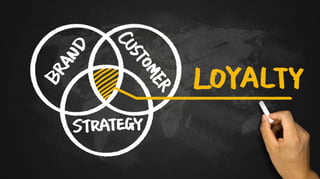Your Brand Promise RX: The Keys to Delivering an Amazing Customer Experience


In late December, a young mother with a cranky infant in tow boarded a Southwest Airlines flight headed for Islip, New York. It was her son’s first-ever trip, and the plane ride home was the only time he’d been awake on an airplane. As soon as they boarded, a confident, caring flight attendant scooped up the anxious mother and baby, carried their bags, helped them find an aisle with an empty seat, and even cooed the little boy in her arms during the flight.
The customer, delighted and thankful for the flight attendant’s assistance, called Southwest’s feedback line to tell them her story. When she couldn’t get through, she took to Facebook instead, and shared her experience on the Southwest Airlines Facebook page. As a result, the grateful, gushing post was “Liked” more than 220,000 times and shared more than 25,000 times – including, of course, by Southwest Airlines’ corporate social media team.
In today’s digital-social age, marketing and customer service have never needed each other as much as they do now. Your brand promise is always front and center–and customers can and will feel empowered to give you instant feedback–whether their customer experience was a success or failure.
For those individuals and enterprises that have experienced the social media equivalent of stepping in puppy excrement, the best marketing machine in the world can’t overcome poor, resonant customer feedback on social media, review sites, or through word of mouth. Today’s customers know they are in the drivers’ seat when they choose whom to work with – and that digital pile of feedback that just keeps growing, also plays a key role in helping them to decide whether to call you, or your competitor.
But just how consistent are you in delivering what YOUR business promises?
Research firm Gartner predicts that more than half of business enterprises require significant business model change–starting with the brand promise–simply to improve consumer sentiment. But, more than just the responsibility of the Chief Marketing Officer, phase-shifting of this magnitude requires an “all-hands-on-deck” commitment to boosting customer confidence.
So how do we diagnose whether this malady–this disconnect between your brand promise, and consumer perceptions–exists in your organization? Start by asking yourself the following five questions:
- Does your company do what you said it would? Is your brand trustworthy? Are you accountable when you need to be?
- Is your value proposition evident in how you deliver your products and services? When you think “world-class customer service,” what does that mean to you, and more importantly, what does that mean to your customers?
- How are you contributing to the setting of customers’ expectations? Do you exceed or fail to meet customer expectations on a regular basis?
- What happens when things don’t go smoothly? How you handle these situations can be a make-or-break proposition, with a ripple effect that can shake the foundation of your business. How will your front-line customer service people react to an unhappy customer, or in a PR emergency?
- Are your employees empowered to do the right thing, or only to follow policy? Do you have the process in place to allow them to quickly do the right thing, or do they have to fight through layers of bureaucracy to make the right thing happen?
With this present-day assessment in mind, the first step to aligning your brand promise with customer experience is to really listen to your denizens. Become aware of what they want and need by engaging in the following:
- Listen to your social media followers and review site comments. Make sure you keep track of customer sentiment on these channels on a regular basis.
- Conduct Net Promoter Score surveys, with an open ended question like, “why did you provide this rating?”
- Talk to your customers! Customer service can provide excellent feedback to marketing about what customers are saying. Periodically, marketing folk should descend from the ivory tower and independently engage with the people who pay their salaries.
Next, empower your team. Remember the old adage, “the customer is always right?” Set up policies that allow your front-line employees to live that adage. Minimize the number of approvals employees need to get in order to help a customer. Acknowledge the front-line employees who score positive feedback from happy customers, and illuminate both positive and negative feedback. Positive feedback is a great morale booster. Ignoring negative feedback detracts from that boost – so embrace it, too, as a way to learn and improve your business.
Finally, act on what you learn. Take responsibility for customer service fails, and publicly offer to make it right. Contact customers directly who provide a negative comment or poor NPS, thank them, and immerse yourself in how you can improve or make it right. It’s quite offensive to your customer’s sensibilities when they don’t receive a response to negative feedback, and you’re sure to lose a customer if you refuse to acknowledge issues.
More than three quarters of consumers say they view customer service as the true test of how much a company values them. By focusing your team and its strategies on putting the customer first, in the fastest, sincerest way possible, you’ll tackle customer challenges head on, and improve the customer experience as you learn, take responsibility, and grow the authenticity and credibility of your brand.
Topics: Brand Management, Customer Satisfaction, Customer Feedback
Mon, Mar 21, 2016.png?width=1500&height=398&name=CO_Corporate%20Logo%202021_4C_HOR_FNL-1%20(1).png)

